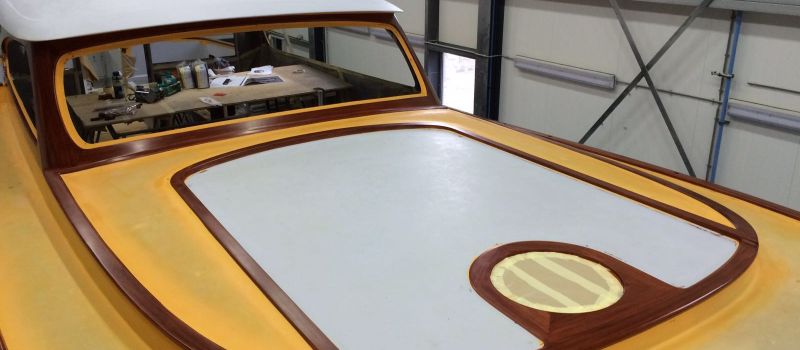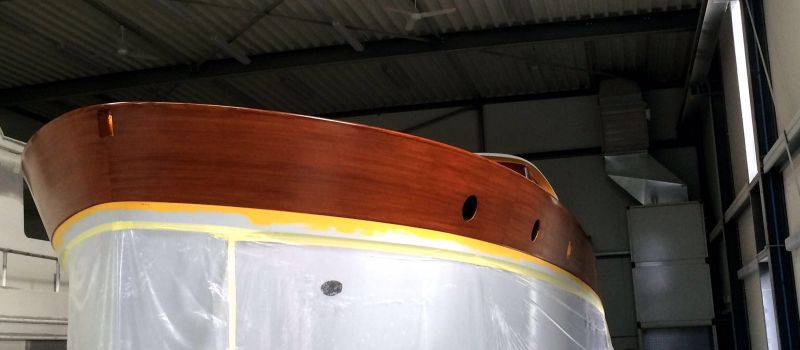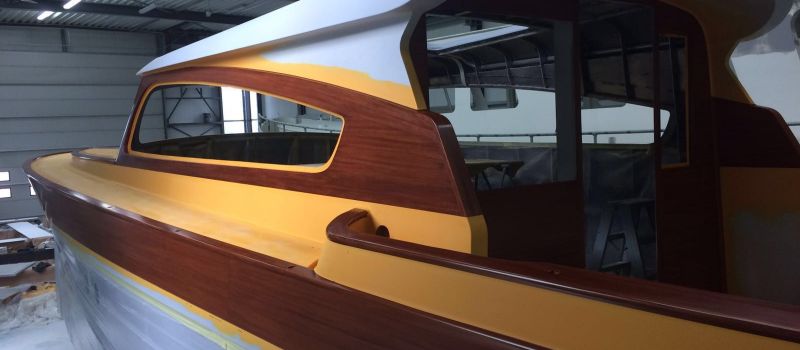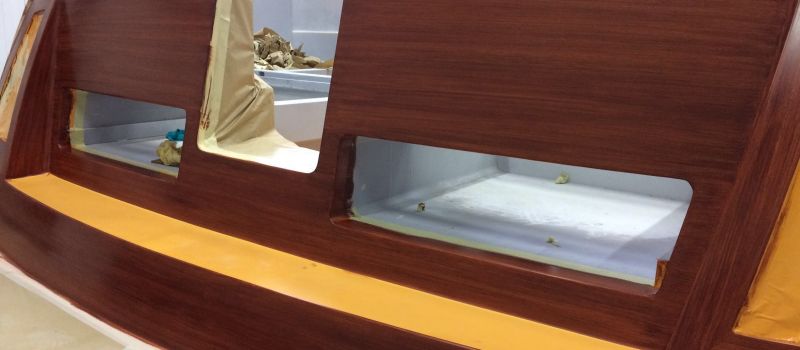October 2022
The fine art of painting imitation wood
Is that really not wood? This is a question we often hear at Breedendam when people see one of our MTBs for the first time. We watch on as visitors knock on the surface of the boat’s hull before they’re finally convinced that, yes, those ‘wooden planks’ are indeed the work of master painters and aluminium workers, not the finest carpenters.

Visual DNA
From the moment we started developing the new generation of Breedendams five years ago, designer Guido de Groot saw it as essential to retain the classic wooden looks. “The Breedendam brand made its name for boats that were originally made entirely of wood, then GRP with wood cladding. When we decided to switch to maintenance-free aluminium we were determined to keep this classic visual DNA.
“You can’t add wood on top of aluminium as they expand in different directions, causing the planks to crack over larger surfaces. The only way to solve this conundrum was to find artists able to perfectly imitate the look in paint. That’s where the team from Grainz came in and their work is so realistic that we actually have to convince potential clients that their boat will indeed be made of aluminium. We can even offer owners the choice between simulating mahogany, teak or a darker wenge appearance to create a style that suits them best.”
Decorative grains
Based near the harbour town of Makkum in the north of the Netherlands, Grainz is a partnership between Thijs de Jong and Hesther Pots. “My husband is a carpenter and boat builder with a rich understanding of how you would make a yacht like this from real wood,” explains Hesther. “I am the painter and together we work out the specific dividing lines and joints between each ‘plank’ to ensure consistency and maintain the visual illusion. Thijs applies the paint and I work behind him to carefully create the decorative grains.”
Having started her career in 1994 as a window dresser for major retailers, Hesther has become a specialist in decorative painting, marble and wood imitation, and gilding restoration onshore and off. She has touched up the interiors of a fleet of superyachts for leading Dutch yards, where no difference between the old and new may be discerned. Various exterior work ranging from sun awnings and flagpoles to the names on sailing yacht stern belong to her portfolio today, with the Breedendam boats being one of the most striking examples of the art of simulation.

Maintaining appearances
“I was trained as a restorer to use oil paints but they don’t work well in the marine environment,” Hesther continues. “There are more suitable paints such as acrylics and a new colour stain which dries really quickly, attaching to but not being absorbed by the base layer. Just as with real teak, the effect of the paint is even more magnified when a sufficiently thick layer of clear varnish is added. There always has to be enough varnish so we don’t lose the wood effect when the surface is sanded to add a new UV layer.”
Should an MTB hull be damaged the artists from Grainz will repaint the specific plank involved, which again requires a real eye for careful colour matching. “As teak becomes more rare, we are also working on simulated teak cap rails as a solution that is both practical and environmental,” Hesther concludes. “It is a genuine pleasure to work with a boutique yard like Breedendam where everyone shares our love of classic boats and the final product is so beautiful.”
WOOD IMITATION
This technique is very old and used in all sorts of ways, mostly applied in interiors, on furniture and objects. The reason is either scarcity of the materials, fashionable or a way to evade taxes. In our career, we have found that when applying imitation wood on an iron vessel people seriously question the authenticity and will come up to the yacht and knock on it to see if it is real. The materials we use vary from traditional oil paint on restoration projects to acryl or other paint sorts. It all depends on the surface that we apply it on. In the last decade wood imitation has really taken off due to the scarcity of materials like teakwood it also reduces maintenance costs but last not least technically it’s easier and more fun when repainting a ship with a wood grain.




